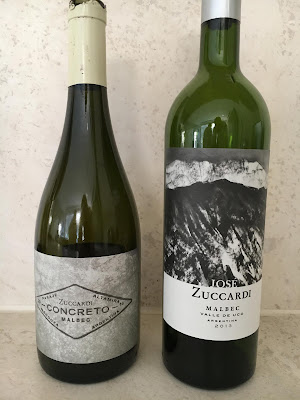Leeuwin Estate and Giaconda used to be the kings of Australian Chardonnay. Then a few things happened. Penfolds started to make a serious effort in the 1990s to bring high quality Chardonnay from cool climate sites to the market. Other producers from Margaret River (think Pierro, Cullen, Vasse Felix, to name a few) made complex wines to challenge Leeuwin. But probably most importantly, the style changed, with in particular Yarra Valley and Tasmanian Chardonnays pushing a leaner, more linear style, where drive and vitality became more important than complexity.
This in turn had an influence on Leeuwin Estate and Giaconda. This is obvious when I compared the 2011 Leeuwin Estate Art Series Chardonnay and the 2008 Giaconda Chardonnay over Christmas. What sometimes used to be a bit of a tropical fruit salad on the palate of the Leeuwin Chardonnay is now more focussed and includes citrus flavours like lemon curd. The Giaconda wine is less oak dominated than in the past.
Talking about oak is important here. Many of the new wave Chardonnays have reduced the component of new oak. It only plays in the background, and this is largely a positive, given the great Chardonnay grapes we can grow in this country. Having said this, it is a great pleasure of drinking Chardonnay which can absorb 100% high quality French new oak without developing a butterscotch wine, as is the case with the two wines here.
The Leeuwin Chardonnay, at 7 years of age, is still young and fresh, with a mix of citrus and tropical fruit flavours, and an excellent balance. The finish is very long. The Giaconda Chardonnay shows the typical rich yellow colour. It is built on a bigger frame, with the oak more noticeable. This is the more powerful wine, with nectarine and hazelnut flavours dominating. Detailed acidity is driving the wine towards a long finish, also.
Both wines: 95/+++
This in turn had an influence on Leeuwin Estate and Giaconda. This is obvious when I compared the 2011 Leeuwin Estate Art Series Chardonnay and the 2008 Giaconda Chardonnay over Christmas. What sometimes used to be a bit of a tropical fruit salad on the palate of the Leeuwin Chardonnay is now more focussed and includes citrus flavours like lemon curd. The Giaconda wine is less oak dominated than in the past.
Talking about oak is important here. Many of the new wave Chardonnays have reduced the component of new oak. It only plays in the background, and this is largely a positive, given the great Chardonnay grapes we can grow in this country. Having said this, it is a great pleasure of drinking Chardonnay which can absorb 100% high quality French new oak without developing a butterscotch wine, as is the case with the two wines here.
The Leeuwin Chardonnay, at 7 years of age, is still young and fresh, with a mix of citrus and tropical fruit flavours, and an excellent balance. The finish is very long. The Giaconda Chardonnay shows the typical rich yellow colour. It is built on a bigger frame, with the oak more noticeable. This is the more powerful wine, with nectarine and hazelnut flavours dominating. Detailed acidity is driving the wine towards a long finish, also.
Both wines: 95/+++









































